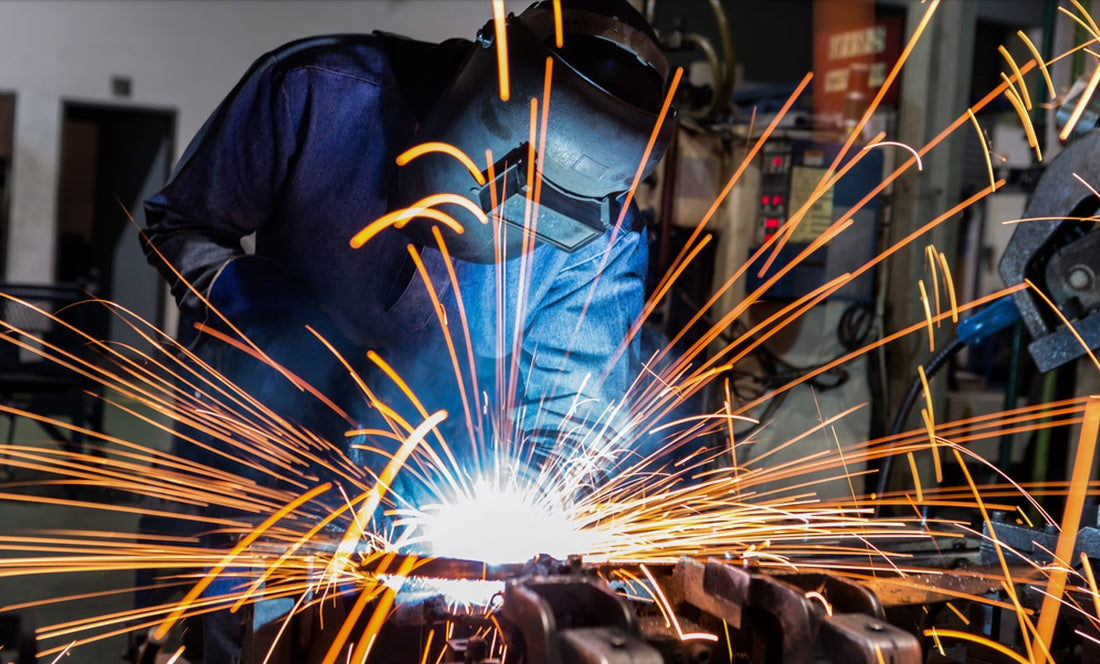The brazing process can be challenging if you don’t know what you’re getting into. A wide variety of materials is used during this process, and even a qualified welding professional who has joined metal hundreds of times is likely to come across a new brazing process at some point in their career.
If you don’t know much about bronze brazing rods and the benefit they can bring into the welding process, don’t worry – you’re not alone. Bronze brazing rods are handy in various brazing processes and for joining a few particular metal types.
Let’s get into what you should know about bronze brazing rods and how they can help you navigate the welding process, whether for a personal or professional project.
What Are Bronze Brazing Rods?
Brazing rods are filler metals used to join two metals together. They are an essential part of the brazing process, which is a kind of welding ideal for welders who want a strong bond obtained by joining two pieces of metal with a filler metal that has a low melting point. Now, no brazing process is the same.
The kind of metal you’re working with and what types of metals you’re trying to join together can significantly impact various things. These include the temperatures you’re working at, the kind of torch you need, the level of hand protection you need, and the type of filler metal you should use.
Bronze brazing rods are an excellent option for joining together ferrous metals, bronze, brass, copper, and alloys. Bronze brazing rods often contain other kinds of metal, including brass, nickel, copper, or manganese, but the list goes on.
There are many bronze brazing rods on the market that you’re likely to come across, and each has an intended use. One of the significant benefits of bronze brazing rods is that they are self-fluxing. However, you might be wondering – what is fluxing, and how does a rod fluxing itself benefit you?

What Is Flux?
In the brazing process, a filler metal is melted between two pieces of metal. This filler metal usually comes as a brazing rod with a lower melting temperature than the joined metals. This usually results in a smooth bond that doesn’t tarnish the appearance of the metals being joined.
A material called flux is used to help achieve a clean bond that will correctly join the two metals together. Flux helps clean and purify the filler metal and ensures that no dirt, grime, or other particulates interfere with brazing.
When it comes to bronze brazing rods, they are usually self-fluxing, which means that you don’t need to apply any flux directly to them. This can help you save on costs and time, essential commodities in any industrial process.
However, remember that only pure bronze brazing rods are self-fluxing – if you have a manganese bronze brazing rod or some other kind of combined metal rod, you’ll need a flux that matches that.
Using Bronze Brazing Rods in Bronze Welding
While brazing rods are typically utilized in the brazing process, you can use bronze brazing rods for bronze welding. This can result in a stronger bond between the metals you’re trying to join, so if strength is the primary factor you’re going for in your welding job, then we recommend going with this process for your metalworking needs.
To use bronze brazing rods during braze welding, you’ll want to ensure your rods are clean and ready to be utilized effectively. You’ll also want to ensure you have the proper equipment. This will include a TIG welder, argon gas, the right amount of bronze filler rods, and flux if your rods aren’t at the level of cleanliness you would like.
Once you’ve gathered your materials, ensure you also have the right safety equipment. This means a proper welding mask, gloves, and making sure any bare skin is completely covered up. There’s nothing worse than a stray spark or bit of melted metal landing where it shouldn’t.
Ensure your TIG welder is set up at a low current to avoid any potential issues during the welding process. While an AC is ideal for keeping oxide out when working with aluminum bronze materials, you might want to go with a DC if you don’t want to restart your TIG welder repeatedly.
We won’t go over every step of this welding process, but we would recommend keeping in mind that welding bronze usually requires a higher amperage than you might expect. Bronze is prone to losing heat during the welding process. It transfers heat a lot faster than other metals.

Finding Bronze Brazing Rods
If you’re searching for bronze brazing rods to utilize for your next welding process, look no further than right here at Ecenrode Welding Supply, LLC. We keep a variety of welding and brazing rods in stock so that you always have an easy time finding the materials you need. There is nothing worse than settling down to do a job and not being able to get what you need to get your hands on.
Our bronze brazing rods are ideal for joining all kinds of metals and alloys, including steel, stainless steel, brass, copper, and cast iron. If you’re unsure whether you can utilize our bronze brazing rods for your job, our team would be happy to chat with you about the intended uses of our related products and which would be most ideal for you.
Good Luck With Your Brazing Process
No welding job is ever easy, but we hope we were able to make yours more manageable with this comprehensive guide about bronze brazing rods. Brazing is a unique metal-joining process, but it can be intimidating for someone who has never done it before.
Hopefully, this information made it at least a little more approachable. If you’re an experienced welder or metalworker, we hope you learned something new and that you’ll be encouraged to learn more about various aspects of metallurgy. Thanks for reading, and have a great day!

